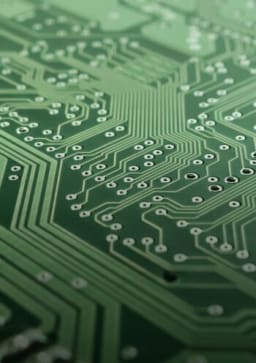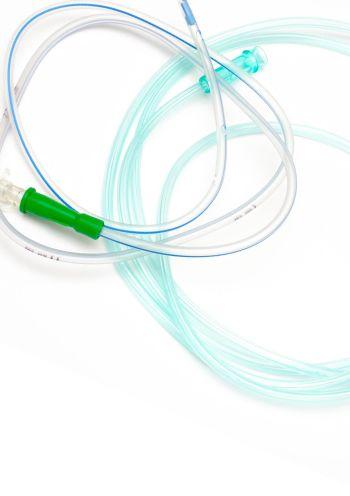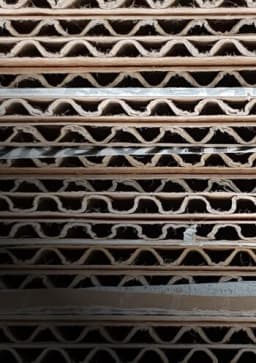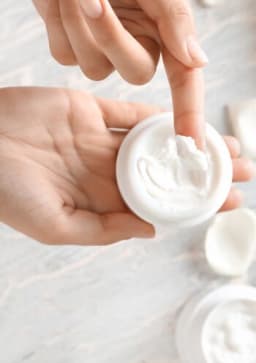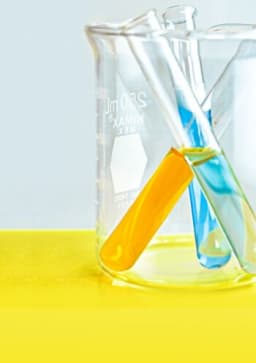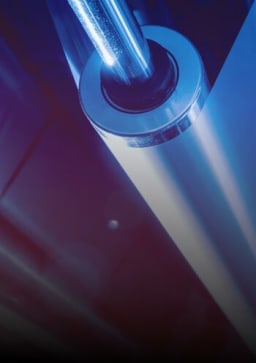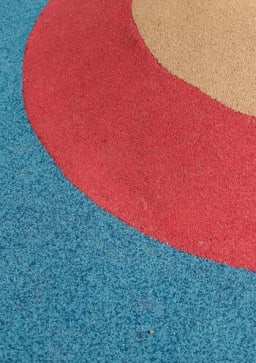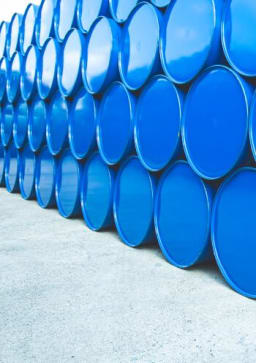Esschem
About Us
Methacrylate bead polymers & copolymers
Esschem is the world’s leading producer of methacrylic bead polymers.
Today, Esschem continues at the forefront of methacrylate chemistries for orthodontics, cosmetics, orthopedic, and other related industries . We have dedicated ourselves to designing and developing products, services and production capabilities that provide a clear performance difference to our customers.
Our considerable experience makes us a trusted partner and supplier worldwide. Esschem offers a complete set of research, customization, manufacturing and packaging resources to our customers and the industry.
Browse Products by Market
View All ProductsBrowse Products by Technology
View All Products
Featured Products

Esschem Bio-plasticized / MMA Bead Polymers
MMA bead polymers containing bio-plasticizers result in materials with increased flexibility and decreased tG.
Applications: Film & Foil Coatings, Roof Coatings, Electronics Adhesives, Printed Circuit Boards (PCBs), Nail Care, Sealants & Caulks, Textile Manufacturing, Carpet & Upholstery, Apparel, Carpet, Medical Devices & Assemblies, Building & Construction, Industrial & Assembly Adhesives, Parts & Components, Medical, Packaging Coatings, Beauty & Care, Decorative Materials & Finishes, Leather & Textiles
Product Families: Visual Modifiers, Texturizers & Fillers, Performance Additives, Thermoset Resins, Binders, Acrylics, Acrylates & Methacrylates, Pre-Treatment Auxiliaries, Acrylics, Resins & Binders, Polymers & Resins, Functionals, Elastomer Additives, Monomers & Oligomers, Battery & Electronic Materials, Textile & Leather Chemicals
Chemical Family: Methacrylates, Acrylic Ester Copolymer, Acrylics, Acrylates & Methacrylates
Polymer Name: Polymethyl Methacrylate (PMMA)
End Uses: Carpet, Medical Devices
Labeling Claims: Biocompatible, Non-Toxic, Bio-based

Esschem MMA Bead Copolymers
Methyl methacrylate (MMA) bead polymers are known for high glass transition temperature, melting point, tensile strength, and impact strength.
Applications: Chemical Manufacturing, Glazing & Window Elements, Siding & Trim, Film & Foil Coatings, Roof Coatings, Electronics Adhesives, Printed Circuit Boards (PCBs), Nail Care, Sealants & Caulks, Additive Manufacturing, Textile Manufacturing, Carpet & Upholstery, Apparel, Carpet, Medical Devices & Assemblies, Building & Construction, Industrial & Assembly Adhesives, Building Materials, Parts & Components, Medical, Chemical & Industrial Manufacturing, Packaging Coatings, Beauty & Care, Building Envelope & Roofing, Decorative Materials & Finishes, Leather & Textiles
Product Families: Cement & Concrete Additives, Visual Modifiers, Texturizers & Fillers, Performance Additives, Thermoset Resins, Binders, Acrylics, Acrylates & Methacrylates, Pre-Treatment Auxiliaries, Acrylics, Resins & Binders, Polymers & Resins, Functionals, Elastomer Additives, Monomers & Oligomers, Construction Chemicals, Battery & Electronic Materials, Textile & Leather Chemicals
Chemical Family: Methacrylates, Acrylic Ester Copolymer, Acrylics, Acrylates & Methacrylates
Polymer Name: Methyl Methacrylate Copolymer
End Uses: Electrical/Electronic Applications, Prototyping, 3D Printing Resins, Carpet, Medical Devices
Labeling Claims: Biocompatible, Non-Toxic

Esschem MMA - Styrene Bead Copolymers
MMA / Styrene bead copolymers, also known as SMMA, is a clear thermoplastic, with high transparency, high rigidity and excellent scratch resistance.
Applications: Film & Foil Coatings, Roof Coatings, Electronics Adhesives, Printed Circuit Boards (PCBs), Nail Care, Sealants & Caulks, Textile Manufacturing, Apparel, Carpet, Medical Devices & Assemblies, Building & Construction, Industrial & Assembly Adhesives, Parts & Components, Medical, Packaging Coatings, Beauty & Care, Decorative Materials & Finishes, Leather & Textiles
Product Families: Visual Modifiers, Texturizers & Fillers, Performance Additives, Thermoset Resins, Binders, Acrylics, Acrylates & Methacrylates, Pre-Treatment Auxiliaries, Acrylics, Resins & Binders, Polymers & Resins, Functionals, Elastomer Additives, Monomers & Oligomers, Battery & Electronic Materials, Textile & Leather Chemicals
Chemical Family: Styrene-Acrylic Copolymer, Styrenics, Styrene Copolymers, Methacrylates, Styrene Methacrylate Copolymer, Acrylics, Acrylates & Methacrylates
Polymer Name: Styrene Methyl Methacrylate Copolymer (SMMA)
End Uses: Carpet, Medical Devices
Labeling Claims: Biocompatible, Non-Toxic

Esschem MMA - EMA Bead Copolymers
Bead copolymers of MMA / EMA usually exhibit high glass transition temperatures, melting points, and tensile strengths.
Applications: Film & Foil Coatings, Roof Coatings, Electronics Adhesives, Printed Circuit Boards (PCBs), Nail Care, Sealants & Caulks, Textile Manufacturing, Carpet & Upholstery, Carpet, Medical Devices & Assemblies, Building & Construction, Industrial & Assembly Adhesives, Parts & Components, Medical, Packaging Coatings, Beauty & Care, Decorative Materials & Finishes, Leather & Textiles
Product Families: Visual Modifiers, Texturizers & Fillers, Performance Additives, Thermoset Resins, Acrylics, Acrylates & Methacrylates, Pre-Treatment Auxiliaries, Acrylics, Binders, Resins & Binders, Polymers & Resins, Functionals, Elastomer Additives, Monomers & Oligomers, Battery & Electronic Materials, Textile & Leather Chemicals
Chemical Family: Methacrylates, Acrylic Ester Copolymer, Acrylics, Acrylates & Methacrylates
Polymer Name: MMA/EMA Copolymer
End Uses: Carpet, Medical Devices
Labeling Claims: Biocompatible, Non-Toxic

Esschem EMA Bead Copolymers
EMA bead polymers provide the strength of PMMA, with a slightly lower glass transition, and an overall slightly softer and more flexible final product.
Applications: Film & Foil Coatings, Roof Coatings, Electronics Adhesives, Printed Circuit Boards (PCBs), Nail Care, Sealants & Caulks, Textile Manufacturing, Carpet & Upholstery, Apparel, Carpet, Medical Devices & Assemblies, Building & Construction, Industrial & Assembly Adhesives, Parts & Components, Medical, Packaging Coatings, Beauty & Care, Decorative Materials & Finishes, Leather & Textiles
Product Families: Visual Modifiers, Texturizers & Fillers, Performance Additives, Thermoset Resins, Binders, Acrylics, Acrylates & Methacrylates, Pre-Treatment Auxiliaries, Acrylics, Resins & Binders, Polymers & Resins, Functionals, Elastomer Additives, Monomers & Oligomers, Battery & Electronic Materials, Textile & Leather Chemicals
Chemical Family: Methacrylates, Acrylic Ester Copolymer, Acrylics, Acrylates & Methacrylates
Polymer Name: Ethyl Methacrylate Copolymer
End Uses: Carpet, Medical Devices
Labeling Claims: Biocompatible, Non-Toxic
Most Viewed Products
View All Products




